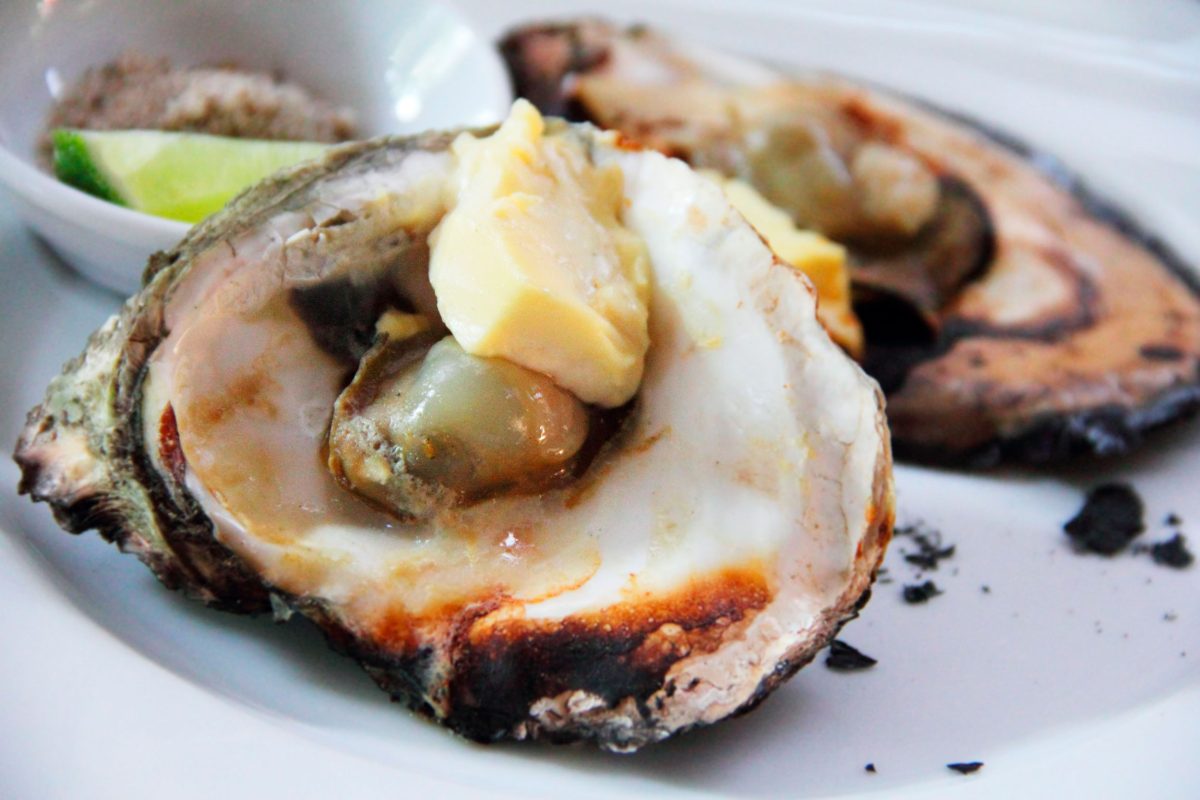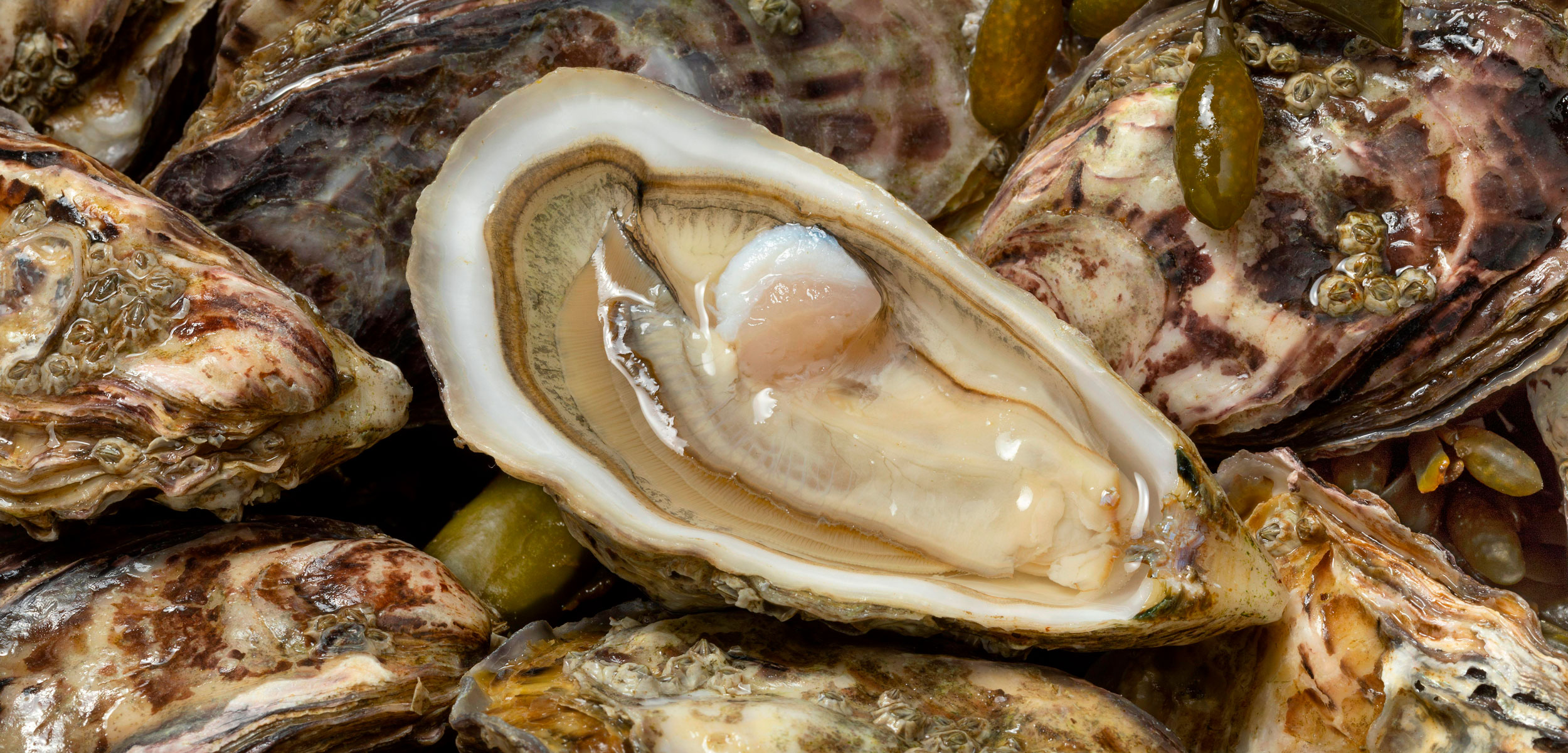So Long Triploids, Hello Creamy Oysters
Triploid oysters—selectively bred for summer eating—suffer in high temperatures. Is their plight enough to get us to change our oyster eating habits?
Article body copy
There’s an old adage about oysters: in months without the letter r—May, June, July, and August—it’s best to stay away.
An oyster eaten outside these months should have a satisfying snap, like al dente pasta, says Shina Wysocki, farm director at Chelsea Farms in Washington State. That slightly firm, satisfying texture is a sign you’re eating a sexually immature oyster. But summer oysters—that is, oysters in their mating season—naturally get flabby, and their gonads swell with gametes. “It’s sperm and eggs,” says Gary Fleener, the senior scientist at Hog Island Oyster Company in Marshall, California. “It coats your mouth like heavy cream does.” It is, shall we say, an eating experience not everyone finds appetizing.
For decades, however, oyster consumers have been able to ignore the conventional wisdom about oysters and r months. Regulations, refrigeration, and the rise of industrial-scale oyster farming now make it possible to eat oysters year-round. Even more crucially, in the late 1980s, scientists selectively bred a new kind of oyster, known as the triploid oyster, that’s sterile, faster growing, and less “spawny” than its naturally occurring counterparts. The emergence of triploids has untethered oyster consumption from natural oyster life cycles, and consumer demand now peaks in summer, when people want cold beer, chilled wine, and sea treats served on ice.
“Similar to how we use selective breeding in watermelon to produce seedless watermelon, you can do the same thing with oysters,” says Matthew George, the coastal shellfish manager for the Washington Department of Fish and Wildlife. In 2016, 50 percent of all Pacific oysters farmed on the west coast of the United States were triploids. But recently, that percentage has been trending downward as growers notice disproportionately higher triploid mortality rates.
A recent study showing that triploid oysters may be more sensitive to extreme heat than their diploid progenitors has scientists and oyster farmers worrying about the future of these scrumptious, sperm-free shellfish—and questioning whether today’s hotter climate means our enjoyment of oysters should return to a more seasonally driven schedule.

In the late 1980s, scientists discovered a reproductive technique that uses tetraploids—oysters with four sets of chromosomes—to yield triploids, oysters with three sets of chromosomes. Inducing triploidy suppresses genes that promote annual production of gametes—eggs and sperm—resulting in a plumper oyster that doesn’t get “spawny” and can be harvested sooner and year-round. Triploid oysters help growers meet summer market demand and are also less of an environmental threat; since many triploids can’t reproduce, non-native species can be grown without as high of a risk of them invading nearby waters. Illustration by Mercedes Minck
Originally, says George, scientists figured sterile triploid oysters would be more resilient than their cousins with just two sets of chromosomes. Rather than exerting energy to produce gonads, he says, the oysters could spend their resources on survival. But over time, oyster farmers have noticed that triploid oysters don’t fare as well during heatwaves—or in general. “Anyone at my farm would tell you that triploids seem to be a bit fussy,” Fleener says.
In the lab, George and his team confirmed triploid oysters’ sensitivity. When exposed to heat stress, triploid Pacific oysters die at a rate 2.5 times that of the diploids.
Plus, juvenile triploid oysters (known in the industry as seed) are more expensive than diploid seed—and many farmers are becoming less willing to gamble on such poor odds for survival.
Wysocki—of Chelsea Farms—used to buy triploid seed but isn’t currently growing any. “I spent a lot of money on triploid seed to have them die,” she says. Similarly, about eight years ago, Washington-based Taylor Shellfish Farms was planting 70 percent triploids and 30 percent diploids. Now, that ratio has flipped. And in 2022, Washington’s Hama Hama Oyster Company was planting 24 percent triploids. That number is now down to 18 percent, says Adam James, general manager of shellfish operations at the company. “We’ve kind of moved away from purchasing lots of triploids because we were seeing greater mortalities.”

Robert Spaulding, the executive chef at Elliott’s Oyster House in Seattle, Washington, says not everyone minds spawny oysters. In fact, some people prefer them on the creamier side. But “spawniness” can also be eliminated by pan-frying, grilling, or baking oysters—this denatures the sperm and egg proteins and firms up the texture. “A spawny oyster doesn’t gross me out,” Spaulding says. “I just prefer an oyster farther down on the spawn scale because it gives me more of a sense of the place where it’s from.” Photo by Liubov Mikhailova
With global temperatures on the rise, triploids are likely to suffer. What does this mean for an industry where consumer demand is at its peak when regular diploid oysters are too sexually ripe for many people’s palates? Will consumers have to readapt to oysters’ natural seasonal variability? Or do farmers and scientists double down on developing more resilient triploid oysters?
Five years ago, Taylor Shellfish Farms started working on the latter. The company began selectively breeding oysters in the hope of eventually developing triploid oysters that survive better in the ocean.
Neil Thompson, an oyster geneticist at the US Department of Agriculture, is also working to selectively breed more disease-resistant diploid Pacific oysters with the aim of then breeding triploid oysters that are less sensitive to environmental stressors. The trick is to identify specific heritable traits that correlate with survival and then select for those to strengthen the oyster’s climate adaptability.
In the meantime, West Coast oyster farmers can continue to meet summer demand by finding ways to diversify the origins of their oysters, such as by sourcing the shellfish from colder locations when temperatures rise. Of course, shipping oysters from afar emits planet-warming carbon dioxide, so oyster growers are also exploring other techniques, including suspending their developing oysters in deeper, cooler water to delay spawning.
Then there’s the marketing angle. “Maybe we need to find the language to talk about a creamy oyster without using the word spawny or gonad,” James says.
As far as consumer behavior goes, farmers and restaurant owners don’t want to deter anyone from enjoying oysters in summer. Rather, they encourage people to also seek the shellfish during the seasonal peak—when the weather is cold, the oysters have a snap, and the complex flavors imbued by the local bays and inlets are worthy of a chef’s kiss.

